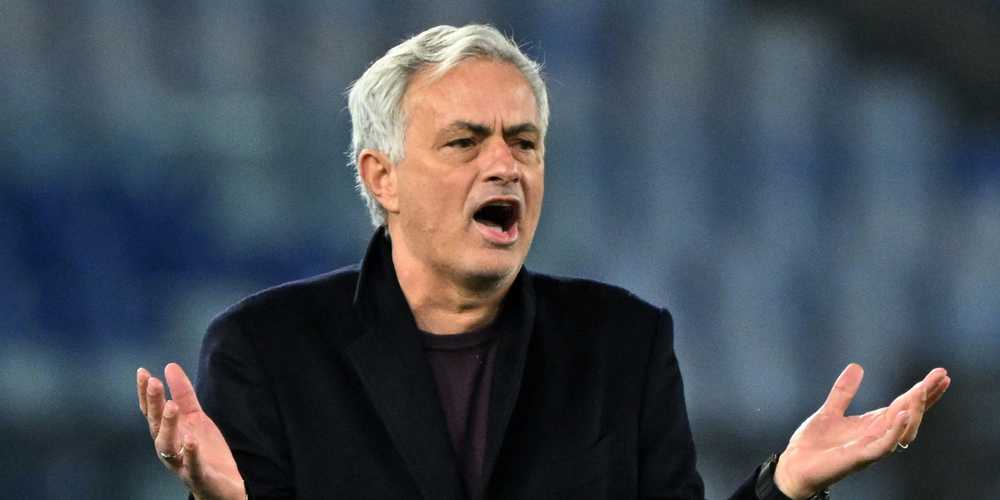Over the past five years, Tottenham Hotspur has undergone significant transformation, marked by considerable managerial turnover, disappointing results, and key player departures. The club has seen five different permanent managers take charge, including the high-profile appointment of José Mourinho. During this period, Spurs endured an unsuccessful League Cup final against Manchester City, and the departure of their all-time top scorer, Harry Kane.
In addition to the managerial changes, Spurs experienced a steady stream of signings, with each coach bringing in players that aligned with their respective strategies. Some of these signings enjoyed varying degrees of success, while others, especially under Mourinho, have been deemed costly misfires. One such signing, which continues to raise eyebrows, is the acquisition of Danish midfielder Pierre-Emile Højbjerg, who became one of the most high-profile disappointments of Mourinho’s reign.
Mourinho’s 2020 Summer Signings
The summer transfer window of 2020 was a pivotal one for Spurs, as Mourinho sought to strengthen the squad in anticipation of a return to the upper echelons of English football. Among his most notable acquisitions were two full-backs, Matt Doherty and Sergio Reguilón. However, neither of these signings lived up to expectations, with both struggling to replicate their form from previous clubs.
Matt Doherty, the Irish right-back, was brought in from Wolverhampton Wanderers for a reported fee of £14.7 million. Doherty had been a key figure for Wolves, contributing significantly to both their defensive solidity and their attack with 7 goals and 4 assists in the 2019-2020 season. However, his performances at Spurs were far from impressive. Over the course of two and a half years, he made just 71 appearances, contributing a mere 3 goals and 8 assists, before his contract was mutually terminated. His time at Tottenham is often considered a failure, as he never fully adjusted to the demands of playing for a top Premier League club.
Doherty wasn’t the only full-back Mourinho sought to bolster the team with. He also secured the signing of Sergio Reguilón, the highly-rated Spanish left-back from Real Madrid for £27 million. Reguilón had impressed during a successful loan spell at Sevilla, where he contributed 3 goals and 5 assists in 38 appearances. However, his transition to North London was similarly underwhelming. Despite showing flashes of potential, Reguilón never managed to establish himself as a consistent starter. After two disappointing years at Spurs, he was loaned out to Atlético Madrid, Manchester United, and later Brentford, with a permanent move looking increasingly likely.
While both Doherty and Reguilón can be categorized as failed signings, neither one came with the eye-watering salary attached to another of Mourinho’s purchases that summer: Pierre-Emile Højbjerg.
The Costly Signing: Pierre-Emile Højbjerg
Among the signings that Mourinho made in 2020, Højbjerg’s move from Southampton to Spurs was arguably the most successful in terms of his contributions on the field. The Danish midfielder, known for his tenacity and work ethic, arrived for a reasonable fee of around £15 million. While his work rate was rarely questioned, his time at Spurs was mixed. Højbjerg quickly became a regular starter and a key figure in the midfield, yet his performances never quite matched the high expectations set for him. In total, he made 184 appearances, scoring 10 goals and providing 16 assists. However, his inability to add the creative spark or consistency that Spurs fans were hoping for left many feeling underwhelmed.
Despite his solid work ethic and occasional flashes of quality, Højbjerg’s time at Tottenham will be remembered more for his underwhelming impact than for any memorable moments. His biggest issue wasn’t his effort but rather his lack of dynamism and the absence of real standout performances. In a game where ability and results are paramount, Højbjerg’s qualities, although valuable in certain contexts, often seemed to fall short when it came to delivering the game-changing moments Spurs so desperately needed.
Financially, Højbjerg’s signing was a costly one. In addition to his £15 million transfer fee, Spurs agreed to pay the midfielder a hefty £100,000-per-week salary, a figure that now looks particularly high when compared to the earnings of more high-profile players at the club, such as Harry Kane. Over his time at Tottenham, Højbjerg earned around £20.8 million in wages, which, when combined with his transfer fee, brought the total cost of his signing to approximately £35.8 million. This works out to an average of £194,000 per appearance, £3.5 million per goal, £2.2 million per assist, or £1.3 million per goal involvement—a significant amount for a player who, by most standards, failed to live up to his potential.
A Mixed Legacy
While Højbjerg was not a total disaster like some of Mourinho’s other signings, his time at Tottenham is certainly not one that will go down in club history as a resounding success. His departure on loan to Marseille in the summer of 2024, following a year of trying to adapt to Ange Postecoglou’s style, seems to mark the end of an underwhelming chapter in his Spurs career. Højbjerg’s legacy at the club will likely be that of a player who worked hard but ultimately couldn’t provide the quality or consistency required to be considered a true success.
The financial burden of his signing and wages is another reminder of the risks involved in the transfer market, particularly when clubs like Tottenham Hotspur are looking for players who can make an immediate impact. In the case of Højbjerg, Spurs may have hoped for more than just effort and industry—they needed creativity, vision, and the ability to shine in big moments, qualities that were often missing.
In the grand scheme of things, Højbjerg’s signing serves as a cautionary tale. It highlights the gap between a player’s perceived value based on reputation and form at a previous club and their actual impact when transferred to a bigger stage. His time at Tottenham is a stark reminder that in modern football, financial considerations are as important as on-field performances, and in Højbjerg’s case, the financial investment simply didn’t deliver the expected returns.
